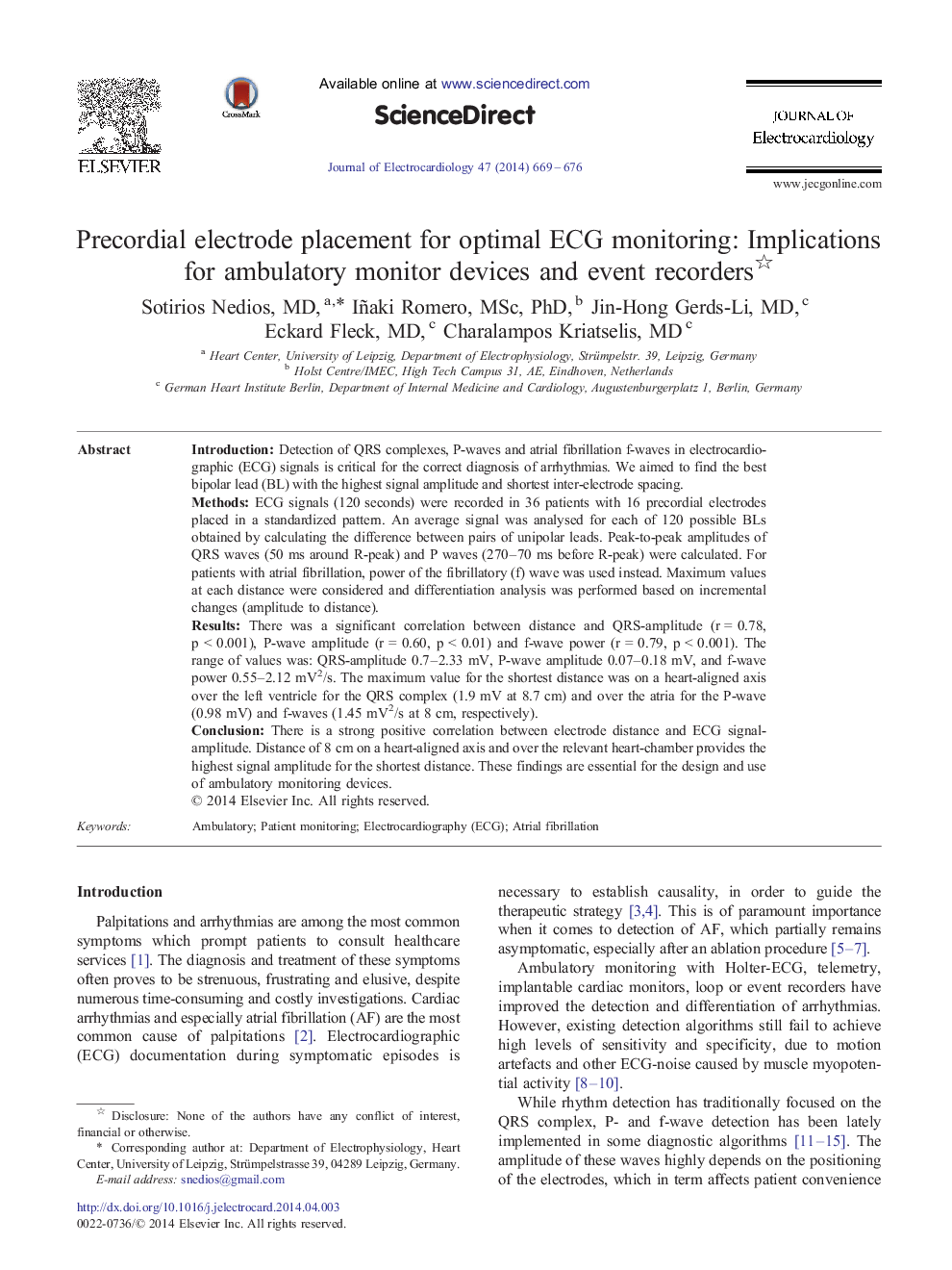| Article ID | Journal | Published Year | Pages | File Type |
|---|---|---|---|---|
| 2967425 | Journal of Electrocardiology | 2014 | 8 Pages |
IntroductionDetection of QRS complexes, P-waves and atrial fibrillation f-waves in electrocardiographic (ECG) signals is critical for the correct diagnosis of arrhythmias. We aimed to find the best bipolar lead (BL) with the highest signal amplitude and shortest inter-electrode spacing.MethodsECG signals (120 seconds) were recorded in 36 patients with 16 precordial electrodes placed in a standardized pattern. An average signal was analysed for each of 120 possible BLs obtained by calculating the difference between pairs of unipolar leads. Peak-to-peak amplitudes of QRS waves (50 ms around R-peak) and P waves (270–70 ms before R-peak) were calculated. For patients with atrial fibrillation, power of the fibrillatory (f) wave was used instead. Maximum values at each distance were considered and differentiation analysis was performed based on incremental changes (amplitude to distance).ResultsThere was a significant correlation between distance and QRS-amplitude (r = 0.78, p < 0.001), P-wave amplitude (r = 0.60, p < 0.01) and f-wave power (r = 0.79, p < 0.001). The range of values was: QRS-amplitude 0.7–2.33 mV, P-wave amplitude 0.07–0.18 mV, and f-wave power 0.55–2.12 mV2/s. The maximum value for the shortest distance was on a heart-aligned axis over the left ventricle for the QRS complex (1.9 mV at 8.7 cm) and over the atria for the P-wave (0.98 mV) and f-waves (1.45 mV2/s at 8 cm, respectively).ConclusionThere is a strong positive correlation between electrode distance and ECG signal-amplitude. Distance of 8 cm on a heart-aligned axis and over the relevant heart-chamber provides the highest signal amplitude for the shortest distance. These findings are essential for the design and use of ambulatory monitoring devices.
